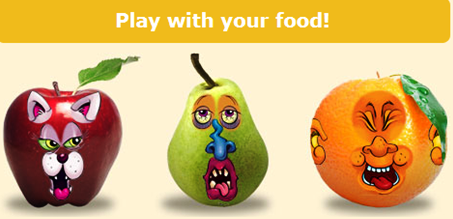According to rumors passed along by Dan Flynn at Food Safety News via the Hagstrom Report (an agricultural subscription news service costing $999 a year), the Office of Management and Budget wants to merge federal agencies, among them the food safety components of FDA and USDA.
Rumors are that the Obama administration wants to do this to make “food safety independent of USDA, which primarily exists to market and promote American farm products.”
If this happens, it could be one major benefit of cost-cutting measures. At the moment, USDA gets about three quarters of the total appropriation for food safety (for roughly one quarter of the food supply) whereas FDA gets one quarter of the appropriation for three quarters of the food supply.
This inequity is a result of the way Congress funds the FDA—through agricultural appropriations committees, not, as any sensible person might expect, through health committees (this too needs to change).
The merger also would eliminate the dysfunctional distinctions between regulations for meat and poultry (USDA) and practically all other foods (FDA). A merged agency could deal with the unpleasant fact that animal waste is the cause of many food safety problems with fruits and vegetables.
The idea of a single food safety agency is not new. The Government Accountability Office (GAO) has been calling for its creation since 1990 or earlier, most recently in 2011.
In the 2011 report, GAO said, as it has for years:
Fragmented food safety system has caused inconsistent oversight, ineffective coordination, and inefficient uses of resources…The Department of Agriculture’s (USDA) Food Safety and Inspection Service and the Food and Drug Administration are the primary food safety agencies, but 15 agencies are involved in some way.
These, GAO points out, administer at least 30 food-related laws.
In addition, GAO urges Congress to ask the National Academy of Science to consider several organizational structures that might work better than the current system:
- A single food safety agency, either housed within an existing agency or established as an independent entity, that assumes responsibility for all aspects of food safety at the federal level
- A single food safety inspection agency that assumes responsibility for food safety inspection activities, but not other activities, under an existing department, such as USDA or FDA
- A data collection and risk analysis center for food safety that consolidates data collected from a variety of sources and analyzes it at the national level to support risk-based decision making
- A coordination mechanism that provides centralized, executive leadership for the existing organizational structure, led by a central chair who would be appointed by the president and have control over resources
The rumors do not say which of these options is favored.
Not everyone is as enthusiastic about a single food safety agency as I am, in part because this and other issues remain to be resolved: where the new agency would go and what its resources might be.
And, as food safety lawyer Bill Marler points out, legal matters are also at stake:
We can’t overlook the legal issues in food safety. Right now there are too few legal consequences for sickening or killing customers by selling contaminated food. We should impose stiff fines, and even prison sentences, for violators, and even stiffer penalties for repeat violators.
So, let’s make some progress in stopping food poisoning and then later pick out the new stationery.
Former USDA official Richard Raymond, writing in Food Safety News argues:
It is my sincere belief that a merger of the two food safety agencies would be an unmitigated disaster in the short term because the cultures are so very different. And unless megadollars flowed with the merger, nothing more could be accomplished than is currently done.
And there are dozens of other valid reasons to “just say no” to the Administration’s thinking.
He suggests reading the comment posted on Dan Flynn’s article from Carol Tucker Foreman, also a former USDA official and a long-time food safety advocate.
The major point of her very long comment is that moving USDA’s meat and poultry inspection responsibilities to FDA
Would likely reduce the current level of health protection provided by food safety laws and curtail the progress that has been made in reducing foodborne illness.
The FDA, saddled by lack of funds, sufficient legal authority, and food safety leadership has been criticized…for its inability to provide a decent level of food safety protection in the domestic and imported food products it regulates.
…Today the FSIS [USDA] has surpassed the FDA in some areas. The agency has adequate resources and high official status in a relatively small Cabinet agency…FDA, despite its new law, is still strapped for funds, burdened by its low position at HHS and the need to manage multiple agendas…Reorganization would not address the continuing problems of either agency.
…We’re confident that trying to move other agencies to the FDA or HHS won’t save money. In fact we are confident it would reduce the effectiveness of the meat and poultry inspection program…leading to a potential increase in foodborne illness and the related costs. That makes it bad policy and a bad bargain.
But what if the new hypothetical single food safety agency does not go to FDA? What if it goes someplace independent of either agency? And what if the new entity started out with the highest possible safety standards, funded adequately?
If we are dealing with rumors, we can deal with dreams too, no?
Update, January 29: Food SafetyNews says all rumors are false. This isn’t going to happen because the meat industry doesn’t want it to happen.


